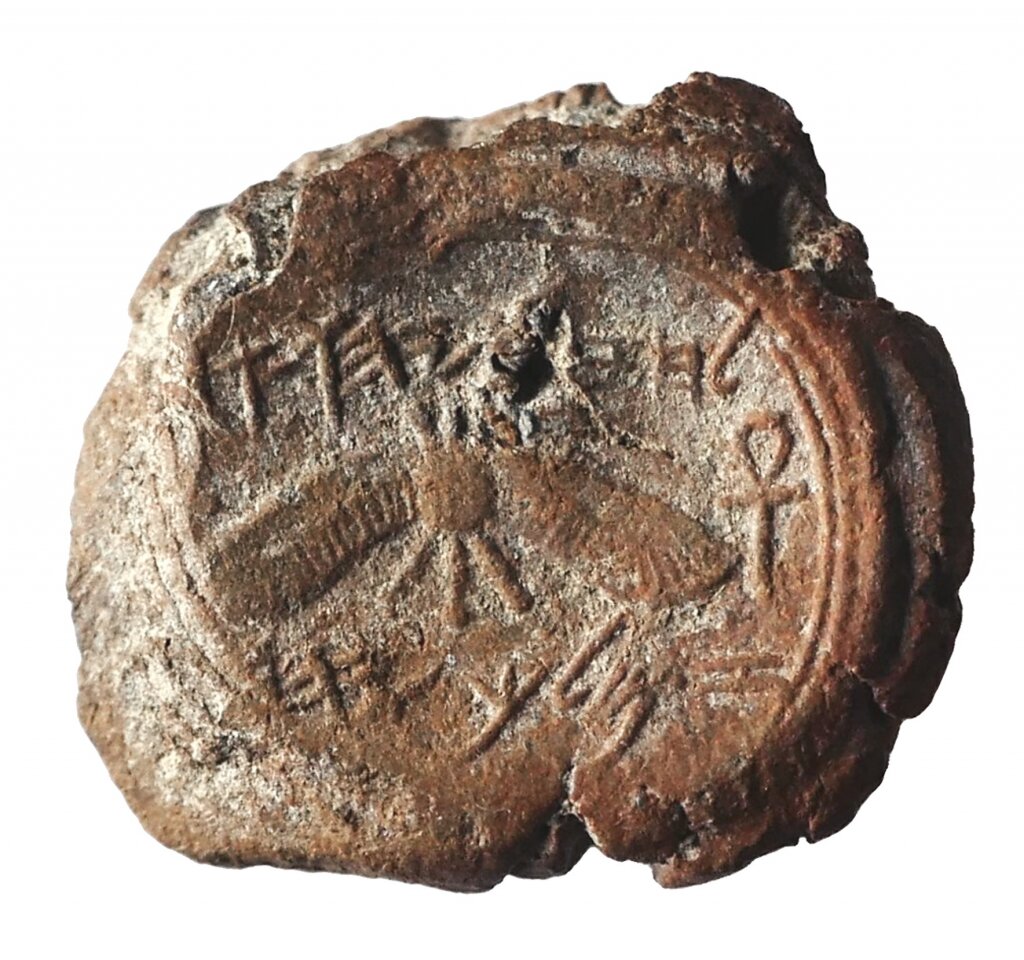King Hezekiah Comes to Life
Modern thinking dismisses the Bible as merely a religious text. It assumes its purpose is to inspire pious behavior, not to establish historical fact. But every now and again, the dust of Jerusalem stirs. Excavators dig down to the past, unearthing one layer after another. And sometimes, the events and the people of the Bible spring to life.
A new discovery has emerged from the soil of Jerusalem, and it resurrects the history of one of the most important kings in Judah. 2 Kings 18:5 says that “after him was none like him among all the kings of Judah, nor any that were before him.” You can find the name of this king in the biblical books of Kings, Chronicles and Isaiah.
You can also find it on this new discovery: a tiny clay seal impression, known as a bulla. It says: “Belonging to Hezekiah, [son of] Ahaz, King of Judah.”

For the first time ever, the name of a king of Judah has been unearthed in controlled scientific excavations. Dr. Eilat Mazar, the archaeologist who discovered it, called it the most important individual discovery that she has made in her career—a career that includes discovering King David’s palace, Nehemiah’s wall, and a golden medallion featuring a Menorah from the sixth century B.C.
Unearthed but Unrecognized
Dr. Mazar broke the news of King Hezekiah’s bulla at a Jerusalem press conference on December 2. The bulla was first unearthed during the first phase of the Hebrew University of Jerusalem’s Ophel excavations in 2009.

The tiny artifact, just over 1 centimeter in diameter, passed unnoticed by the excavator in the field. Thankfully, Dr. Mazar had chosen the time-consuming, money-draining exercise of wet sifting all the soil that came from this location.
Wet sifting is a fairly recent archaeological procedure where excavators take all the soil from a site, sift it and spray it with water. Much of the time, this is a fruitless endeavor. But occasionally, a tiny object with outsized significance such as this seal impression can be discovered by a keen eye.
Once discovered, this bulla was saved with other similar objects for closer examination. The first attempt to read its ancient Hebrew text proved inconclusive.
But in the middle of 2015, Dr. Mazar’s team was putting the finishing touches on the first volume of her final excavation report for the Ophel. In the process, she again looked at the minuscule seal, with its symbols and its ancient Hebrew lettering.
“We saw that there was a dot between the letters of the name ‘Melkiyahu,’ said Reut Ben-Aryeh, one of Dr. Mazar’s colleagues, “so it’s not the name of Melkiyahu. It was the word Melek [king] and Yehu, and the meaning is Yehuda [Judah].” If that dot hadn’t been discerned in the final check before publication, Hezekiah’s bulla would have remained obscure.
In the past two decades, other seal impressions with King Hezekiah’s name etched on them have been discovered. However, they had all surfaced on the antiquities market and could not be proved authentic. This bulla appeared in a controlled scientific excavation in a layer belonging directly to the time of King Hezekiah.
Who Was Hezekiah?
Fourteen generations after King David, King Hezekiah ascended to the Davidic throne in Jerusalem and ruled the kingdom of Judah. The northern kingdom of Israel, Judah’s sister nation, had just been conquered. Hezekiah, only 25 years old, started his reign by taking on the powerful and numerous priests and adherents of Judah’s pagan religious establishment. Against widespread resistance that had been entrenched over the course of a generation, Hezekiah destroyed the worship of numerous gods and pointed his people to the one true God.
Later, Hezekiah “rebelled against the king of Assyria, and served him not” (2 Kings 18:7). The Assyrian king, Sennacherib, came against Judah and conquered many of its cities. Besides 2 Kings 18 and Isaiah 36, this history is also documented in the annals of Sennacherib. Regarding Sennacherib’s invasion of Judah, one 2,700-year-old prism on display at the British Museum says, “As for Hezekiah the Judahite, who did not submit to my yoke: forty six of his strong walled cities … I besieged and took them. … [Hezekiah] himself, like a caged bird, I shut up in Jerusalem, his royal city.”
Sennacherib considered the takeover of one Judean city, Lachish, to be so important that he had the conquest portrayed on large wall reliefs at his palace at Nineveh.
After Lachish, Sennacherib marched on Jerusalem. Anticipating the attack, Hezekiah famously cut a 1,700-foot underground tunnel through bedrock to deliver fresh spring water into the city. This engineering marvel is referred to in the books of Kings and Chronicles. Today, this conduit is one of Jerusalem’s most popular tourist attractions.
Science and the Bible Converge
Hezekiah’s tunnel, his correspondence, his crisis with Assyria: It’s all real. The conclusive evidence of biblical history is with us to this day.
Could the Bible also be accurate in its other details? For example, what about the account in 2 Kings 19 and 2 Chronicles 32 of Hezekiah praying to God, and God miraculously defeating the formidable Assyrian army?
Archaeological evidence leaves ample room for its accuracy. There is no destruction layer laid down by Assyrian siege weapons. There are no reliefs of a Jerusalem conquest etched along the palace walls at Nineveh. There is no evidence of a successful Assyrian siege against Jerusalem—because it never happened. The Assyrian army withdrew without a conquest, and King Sennacherib was later murdered by one of his sons. That is recorded in the annals of Assyria and the Bible.
Rarely do science and the Bible converge as dramatically and as tangibly as with the life and work of King Hezekiah of Judah. Dr. Eilat Mazar’s most recent discovery is barely the size of your fingertip, but it contains a message of enormous significance. It testifies to the life of one of the greatest leaders in Jerusalem’s incomparable history: Hezekiah, son of Ahaz, king of Judah.
